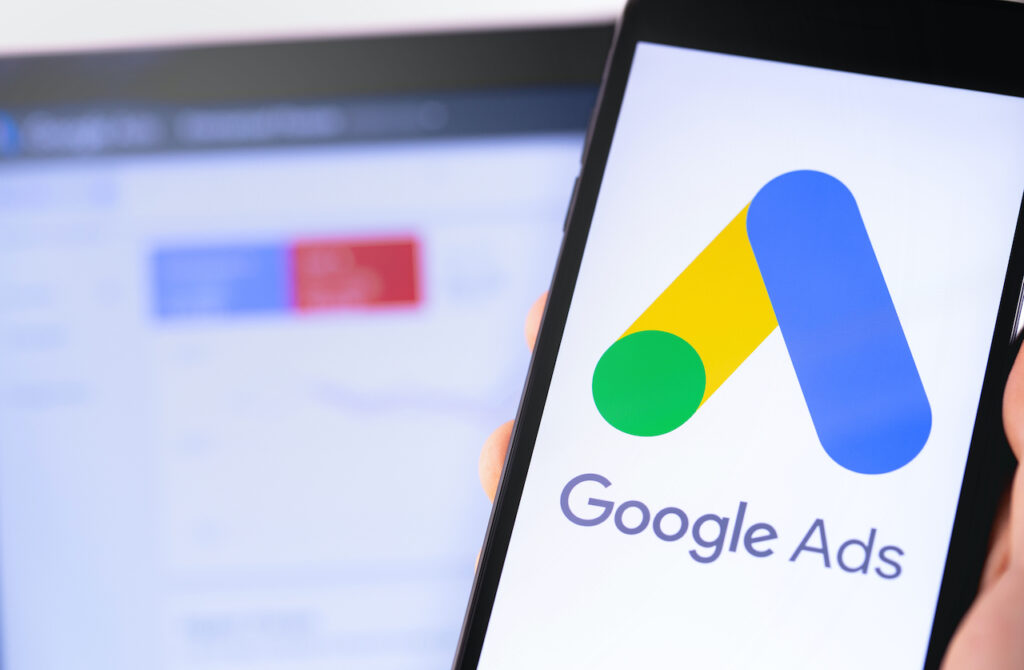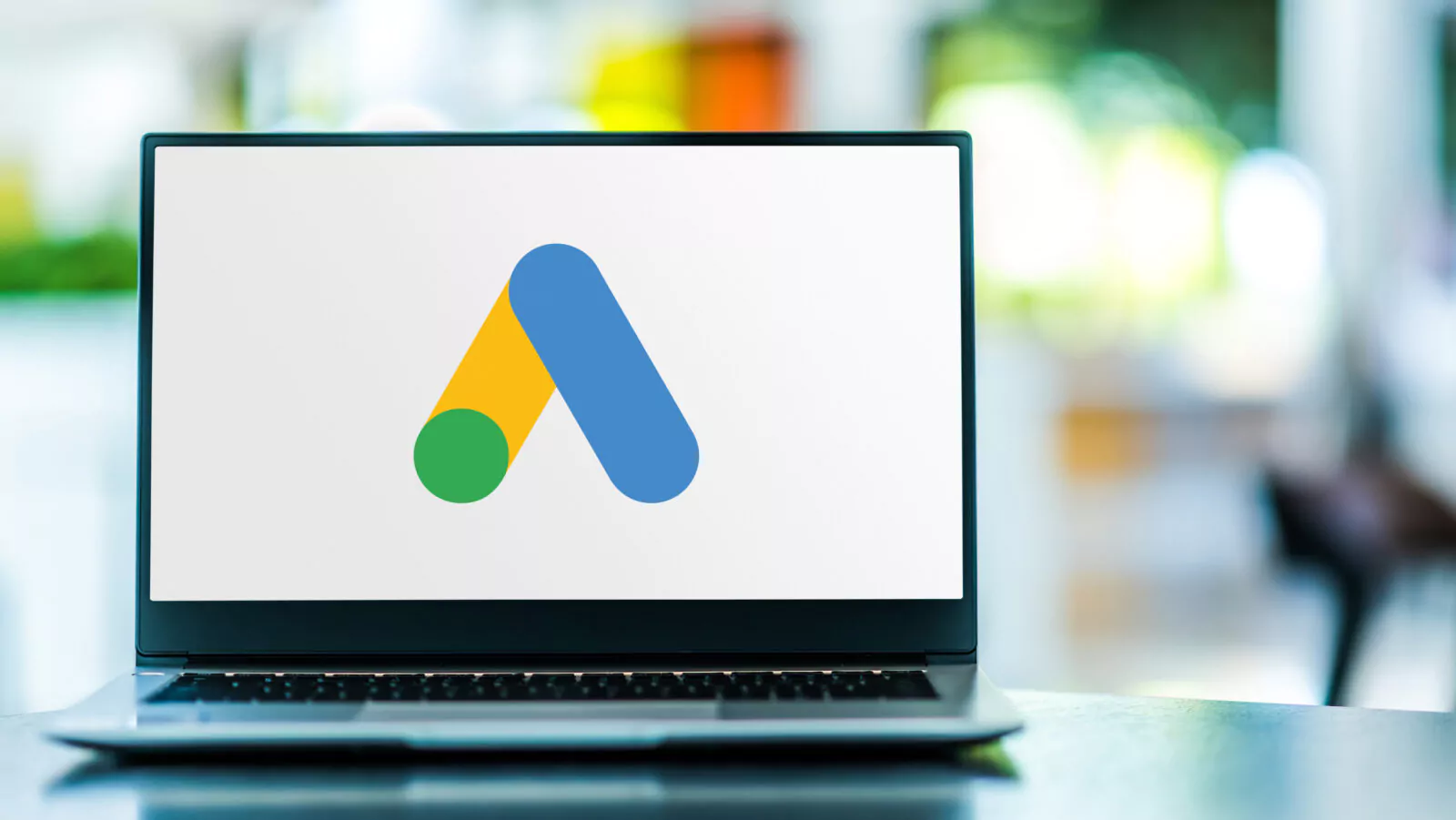With over 8.5 billion searches daily, it’s highly likely you’ve come across a Google ad, perhaps even clicked on one. Google reigns supreme as the go-to search engine, making its Ads platform a prime spot for reaching potential customers. Having been in the game for nearly two decades, Google Ads holds undeniable seniority and authority in paid advertising.
Meanwhile, Insider Intelligence projects that Meta is positioned to rake in 58.5% of its global ad revenue, totaling a whopping $121.90 billion.
In our comprehensive guide, we’re exploring the world of Google Ads and showing you the ropes on how to use this powerhouse platform for your business. From understanding its features to mastering campaign optimization, we’ve got you covered.
Table of Contents
What is Google Ads?
Google Ads, previously called Google AdWords, is an important platform for online advertising where businesses bid for ad placements. It offers a variety of formats like text-based search ads, videos, banners, and more, appearing on Google search results and partner sites.
As the top digital ad publisher in the US, Google Ads rakes in a hefty 28.4% of all ad revenue.
The essence of Google Ads lies in its ability to connect businesses with potential customers actively seeking products or services similar to what they offer. With Google Ads, you can boost website traffic, generate inquiries, and even increase foot traffic to your physical store.
Beyond immediate results, Google Ads also offers a valuable opportunity for ongoing analysis and optimization, enabling businesses to refine their advertising strategies and expand their reach over time.
Types of Google Ads Campaigns
When utilizing Google Ads, advertisers gain the ability to target users across various networks, each offering distinct advantages:
Search ads: These text-based ads target specific keywords on the Search Network, appearing in Google search results when customers express high intent to engage or purchase. This form of advertising, also known as paid search, is often synonymous with PPC advertising.
Display ads: The Display Network allows advertisers to showcase visually appealing banner-style ads on websites within the network, reaching approximately 90% of global internet users. Combining search and display ads proves most effective in reaching a broader audience.
Shopping ads: Through shopping campaigns, advertisers connect detailed product feeds to display relevant products on Google Search, the shopping tab, and across the Google shopping network. Viewers can either make direct purchases or visit the product page.
YouTube ads: Using Google Ads, advertisers can create video or display ads for placement on YouTube videos and search results, capitalizing on the platform’s extensive reach.
Each ad type serves distinct purposes and can align with different marketing objectives. Within these networks, advertisers have access to various campaign types, placements, and formats, allowing for tailored advertising strategies.

Essential Google Ads Concepts to Master
Here are some Google Ad terms to know:
Ad Extensions
Ad Extensions are additional information snippets that complement your ad without incurring extra charges. They come in five categories: Sitelink, Call, Location, Offer, and App.
AdRank
Your AdRank dictates your ad’s position. A higher AdRank means better visibility and increased chances of user engagement. It’s calculated by multiplying your maximum bid with your Quality Score.
Bidding
Google Ads operates on a bidding system, where advertisers set a maximum bid for a click on their ad. You can choose between CPC, CPM, or CPE bidding strategies.
Campaign Type
Google Ads offers seven campaign types: search, display, video, shopping, app, smart, and performance max, each tailored to specific advertising goals.
Click-Through Rate (CTR)
CTR measures the proportion of clicks your ad receives relative to its impressions, indicating ad effectiveness and relevance.
Conversion Rate (CVR)
CVR gauges the rate of form submissions compared to total landing page visits, reflecting the alignment between ad content and landing page experience.
Display Network
Google Ads can appear on search results pages or websites within the Display Network (GDN). GDN comprises sites allowing Google Ads placement, offering text or image-based ads alongside relevant content.
Impressions
Impressions signify how often your ad is displayed on the SERP, providing insights into ad visibility and informing optimization efforts for higher CTR.
Keywords
Keywords are terms matching user queries, determining when your ad appears. Negative keywords exclude irrelevant queries from triggering your ad.
PPC (Pay-Per-Click)
PPC is an advertising model where advertisers pay for each click on their ad, crucial for understanding before launching Google Ads campaigns.
Quality Score (QS)
QS evaluates ad quality based on CTR, keyword relevance, landing page quality, and past performance, influencing AdRank placement.
How Google Ads Functions
Google Ads operates through the interaction of three main players: the searcher, the advertiser, and the Google Ads platform. Each participant plays an important role in facilitating the process, ensuring that businesses can promote their offerings effectively and customers can find products or services that meet their needs.
Here’s a peek behind the scenes at how Google Ads functions:
Advertisers signal their desired keywords to Google by placing bids. These bids range from modest amounts to substantial sums per keyword. Typically, advertisers set daily budgets to allocate funds for individual keyword bids. Fortunately, Google Ads provides flexibility, allowing businesses of all sizes to tailor their advertising spend to their budget constraints.
Potential customers initiate the process by entering keywords into Google’s search bar. The search results page (SERP) presents ads relevant to their query, aligning closely with their search intent. Ad placement on the SERP largely hinges on ad rank.
In the brief span between the user’s search input and the SERP’s appearance, Google swiftly executes ad ranking. This process involves sorting advertisers from position one to the total number of available ad slots on the SERP. Advertisers’ positions are determined by factors like keyword quality score and bid amount, dictating who secures the top spot and subsequent positions.
Upon viewing the ads on the SERP, potential customers may opt to click through to a website they find compelling. This click may lead to further actions such as making a purchase or returning to the SERP to explore other ads or organic search results. Alternatively, they may conclude their search without further engagement.
The Forces Behind Google Ads
Several factors influence the effectiveness of Google Ads campaigns, shaping their performance and outcomes. One such determinant is AdRank, which dictates the positioning of ads on search engine results pages (SERPs). AdRank relies on a formula considering both quality score and bid amount. Quality score, specifically, assesses ad quality and relevance, primarily gauged by the ad’s click-through rate (CTR). A higher CTR indicates better alignment with user intent, which hinges on keyword relevance, ad copy congruence with searcher intent, and the user experience of the landing page.
Another influential factor is the geographical targeting of ads, allowing advertisers to specify the locations where their ads will appear. For businesses with physical storefronts, targeting a localized area around their establishment is advisable. Conversely, e-commerce businesses should target regions where they ship their products. This localization strategy ensures that ads are displayed to users within relevant proximity, enhancing ad relevance and user experience.
Furthermore, keyword selection is needed in optimizing ad relevance and visibility. Extensive keyword research is essential to identify terms that closely align with user intent, ensuring that ads are triggered by relevant search queries. Advertisers typically organize keywords into ad groups, each targeting a specific set of keywords to enhance ad relevance and targeting precision. Google then displays ads based on the selected keywords, emphasizing the importance of selecting keywords that accurately reflect user intent to maximize ad visibility and engagement.
Effective ad copy is essential for driving clicks and conversions. Your ad should resonate with the searcher’s intent, align with your target keywords, and address their pain points with a clear solution. Ultimately, crafting compelling ad copy can differentiate your ad from competitors and encourage users to click through to your landing page. Ensuring consistency between your ad messaging and landing page content is key to maximizing conversions and achieving your campaign objectives.
Additionally, Google Ads retargeting, also known as remarketing, presents a powerful strategy for re-engaging users who have previously interacted with your brand online but have not yet converted. By deploying tracking cookies, you can effectively target these users across the web with tailored ads, reinforcing brand visibility and increasing conversion potential.
How to Use Google Ads
Getting started is straightforward, but it requires a few essential steps. Here’s a detailed guide to help you set up your first campaign on Google Ads:
Use a Google Ads Tool
Why start from scratch when you can make use of Google Ads tools? They’re designed to streamline the process and give you a head start over the competition. Check out resources like the Ultimate Google Ads PPC Kit to kickstart your campaign.
Set Up Your Account
Head over to the Google Ads homepage and hit “Start Now” in the top right corner. Sign in with your Google account or create a new one if you don’t have one yet.
Provide Business Information
Once you’re signed in, you’ll need to input your business name and website. This info will be part of your ad setup.
Define Your Goals
Now, it’s time to clarify what you want to achieve with your ads. Do you want more calls, website sign-ups, foot traffic, or engagement on YouTube? Choose the goal that aligns best with your business objectives.
Develop Your Advertisement
Moving forward, it’s time to craft your ad. This step demands a touch of creativity and might pose a slight challenge. Fortunately, Google provides guidance on what to include in your ad copy. However, the key is to compose an ad that not only captures attention but also converts your audience effectively.
Incorporate Keyword Themes
Subsequently, you’ll be prompted to select keywords that align with your brand. Google offers suggestions to assist you in this process. If you’re new to keyword research, consider starting with the ones recommended by Google. Once you’ve chosen the appropriate keywords, proceed to the next step.
Specify Your Ad’s Location
On the ensuing page, you’ll have the opportunity to designate the location(s) where you wish for your ad to be displayed. This can include areas near your physical address or any other location of relevance.
Establish Your Budget
At this stage, you’ll either utilize the budget options provided by Google or input a specific budget of your own.
Verify Payment Details
Finally, furnish your billing information to complete the setup process. And there you have it – creating your inaugural Google ad is as simple as that!
Integrate Your Google Analytics Account
Chances are, you’ve already implemented Google Analytics on your website to track traffic, conversions, and various metrics. If not, here’s a guide on setting it up for WordPress. It’s imperative to link your Analytics account with Google Ads for smooth tracking, analysis, and reporting across channels and campaigns. This integration allows you to monitor events comprehensively within a unified platform.
Incorporate UTM Codes
Ever noticed those extra bits at the end of a URL after a question mark? That’s Urchin Tracking Module (UTM) codes in action. Google uses them to track activity associated with specific links. By adding UTM codes, you can pinpoint which ads or offers are driving conversions, making it easier to optimize your Google Ads campaign for success. It’s a smart move to add UTM codes at the campaign level during setup, saving you from manual URL tweaking for each ad. Alternatively, Google’s UTM builder can do the job for you.
Implement Conversion Tracking
Conversion tracking is your window into understanding how many customers or leads your ad campaigns are bringing in. While not mandatory, it’s a game-changer for measuring the ROI of your ads accurately. With conversion tracking in place, you can track sales, website activities, app installs, or calls generated from your ads, giving you invaluable insights into campaign performance.
Integrate Google Ads With Your CRM
Centralizing your data in one place simplifies tracking, analysis, and reporting. Your CRM already houses contact data and lead flows, so why not integrate it with Google Ads? This integration allows you to monitor which ad campaigns resonate with your audience, enabling you to tailor future marketing efforts with relevant offers and messaging.
Google Ads presents a great opportunity for businesses to reach their target audience effectively and efficiently. By understanding the platform’s features, mastering essential concepts, and implementing strategic campaigns, businesses can drive website traffic, generate leads, and increase sales.
So why wait? Explore the world of Google Ads today and find the full potential of online advertising for your business. Visit our website for more information.



















